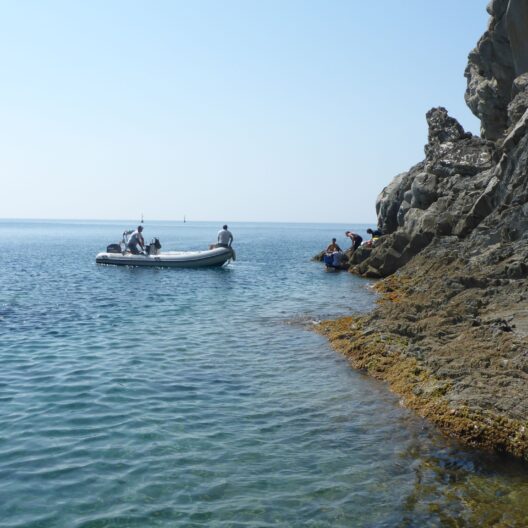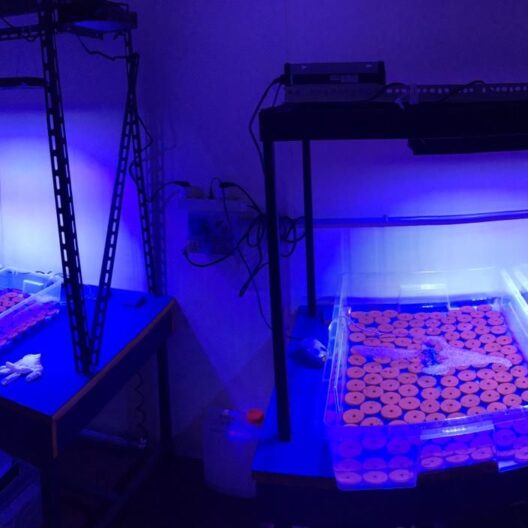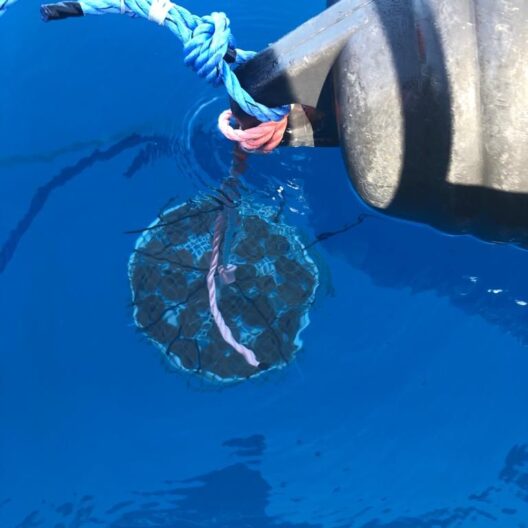
Precious algae: the case of the Cinque Terre
Reading time
0 min
With her marine restoration projects, Mariachiara Chiantore’s team revives Cystoseira forests
Marine restoration is a key activity to restore ecosystems damaged by human activities or natural events. The goal is to restore the biodiversity, functionality, and resilience of these vital environments.
This is precisely what Mariachiara Chiantore, full professor of Ecology at the University of Genoa and co-coordinator of Spoke 2 of the National Biodiversity Center, is concerned with.
“Spoke 2,” he explains, “is dedicated to actions aimed at countering biodiversity loss, such as monitoring pollutants, reducing fisheries-related damage, developing technologies that enable aquaculture with less impact on the environment, maritime spatial planning with a view to safeguarding biodiversity, marine genomics, and finally, what I would like to talk about today, ecological restoration of marine benthic ecosystems.”

Protagonists of the interview
Mariachiara
Chiantore
- Full professor of ecology
- University of Genoa
- mariachiara.chiantore@unige.it Copia indirizzo email
The importance of a kelp forest
Chiantore recounts the ecological restoration project conducted in the Cinque Terre, focused on restoring forests of a brown seaweed genus Cystoseira which plays a key role in the coastal ecosystem.
“We’re talking about a macroalgae: in the Mediterranean we have algae that can reach a maximum of one meter in height – not like in the Pacific or Atlantic Ocean, where they reach as high as 15-20 meters. Despite the reduced height, they give three-dimensionality to the habitat.”
“In the collective imagination,” he adds smilingly, ” algae are seen as slimy substrates on which we walk on reefs. In reality they are very important. Similar to plants, they produce oxygen and store carbon dioxide. They also act as a nursery for various marine species and protect shorelines from wave erosion.”
Intertidale: there where the wave beats
The project coordinated by Chiantore focused particularly on theintertidal, “the area where the wave beats, that is, the tidal zone, which for several hours of the day is out of the water.” This is a hostile environment for marine organisms because they are exposed to large temperature changes. “A forest that retains water maintains a cooler temperature and protects against the impact of waves. It can thus become an environment rich in biodiversity.”
Unfortunately, in the Mediterranean, so-called structuring algae, i.e., those that create habitat, are showing regression due to many factors, includingpollution,water clouding and fishing.
In protected areas, where fishing is banned, “carnivorous fish increase, and this reduces the pressure of herbivores; if there are more carnivores there are slightly fewer herbivores, and the herbivores are the ones who, by grazing, cause a regression of the algal forests. Sea urchins, for example, are grazers that are typically eaten by bream, sea bream — fish that we normally catch.”
In the Cinque Terre, the first half of the twentieth century saw the disappearance of kelp forests due to water clouding: construction work on the mainland had poured much sediment into the sea. Then the situation improved. “Now the water quality is very good,” Chiantore declares, “and aMarine Protected Area has been established.”
A sensitive issue: helping algae to reproduce
The clean water, however, was not enough to regrow the algal forests. “The problem is that this algae, because of the way it reproduces, could not recolonize this area.” The mechanism is supposed to work like this: a zygote, originating from sexual reproduction, falls off the adult alga. Being very adhesive, it sticks to the substrate and grows. If this does not happen, however, the zygote is unable to survive, or be pulled by currents and grow elsewhere.
Help was needed. In the project coordinated by Chiantore, researchers collect the tip of the branches, that is, the fertile portions, from some algae in a healthy population. “Then we place these apexes on terracotta discs, where these portions release zygotes. After 24 hours we remove the apices. What remains are the discs on which our little ones are stuck.”

The next step is to grow the algae in the laboratory for a few weeks until they reach the size of a few millimeters. At this point, clay discs are taken out to sea and attached to the rock where the algae can grow in their natural environment.
Growth is slow, but already within a couple of years they are sexually mature and able to reproduce.
This restoration project has so far seen 60 percent of the transplanted algae survive and grow back into the sea-a significant percentage.
The exploration of ever-new techniques
And it’s not over. Researchers are working to find other ways to grow seaweed before it is transplanted into the sea. One experiment, currently underway, involves “growing seaweed by hanging it at sea, in baskets that are used to grow oysters, near an aquaculture plant.” The method is cheap and also faster: “the residues from the aquaculture plant,” the scientist explains, “are transformed into nutrients that can be used by the algae. Hanging in the middle of the sea, moreover, they do not suffer from grazing by herbivores and competition with other species.”

Satisfaction with the results achieved can also be measured. “There is an index of ecological quality, called the Carlit index, which gives very important weight to the presence of brown algae. In the stretch of coastline where we worked, this index went up from good to excellent quality. This is really motivating. In the Cinque Terre we will continue with the placement of more pucks again this year, thanks to NBFC funding.”
Studying ecology means understanding the functioning and value of our surroundings. These skills, acquired in the university, must then flow out of it into business and management.
Mariachiara Chiantore, Full Professor of Ecology, University of Genoa

